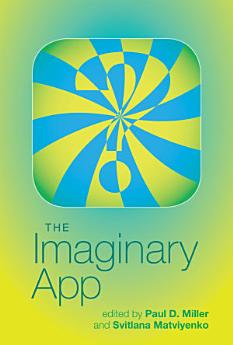The Imaginary App
关于此电子书
Mobile apps promise to deliver (h)appiness to our devices at the touch of a finger or two. Apps offer gratifyingly immediate access to connection and entertainment. The array of apps downloadable from the app store may come from the cloud, but they attach themselves firmly to our individual movement from location to location on earth. In The Imaginary App, writers, theorists, and artists—including Stephen Wolfram (in conversation with Paul Miller) and Lev Manovich—explore the cultural and technological shifts that have accompanied the emergence of the mobile app. These contributors and interviewees see apps variously as “a machine of transcendence,” “a hulking wound in our nervous system,” or “a promise of new possibilities.” They ask whether the app is an object or a relation, and if it could be a “metamedium” that supersedes all other artistic media. They consider the control and power exercised by software architecture; the app's prosthetic ability to enhance certain human capacities, in reality or in imagination; the app economy, and the divergent possibilities it offers of making a living or making a fortune; and the app as medium and remediator of reality.
Also included (and documented in color) are selected projects by artists asked to design truly imaginary apps, “icons of the impossible.” These include a female sexual arousal graph using Doppler images; “The Ultimate App,” which accepts a payment and then closes, without providing information or functionality; and “iLuck,” which uses GPS technology and four-leaf-clover icons to mark places where luck might be found.
Contributors
Christian Ulrik Andersen, Thierry Bardini, Nandita Biswas Mellamphy, Benjamin H. Bratton, Drew S. Burk, Patricia Ticineto Clough, Robbie Cormier, Dock Currie, Dal Yong Jin, Nick Dyer-Witheford, Ryan and Hays Holladay, Atle Mikkola Kjøsen, Eric Kluitenberg, Lev Manovich, Vincent Manzerolle, Svitlana Matviyenko, Dan Mellamphy, Paul D. Miller aka DJ Spooky That Subliminal Kid, Steven Millward, Anna Munster, Søren Bro Pold, Chris Richards, Scott Snibbe, Nick Srnicek, Stephen Wolfram
评分和评价
作者简介
Svitlana Matviyenko is a Lecturer in Media Studies at the University of Western Ontario.
Benjamin H. Bratton is a theorist whose work spans philosophy, computer science, and design. He is Associate Professor of Visual Arts and Director of the Center for Design and Geopolitics at the University of California, San Diego. He is also Visiting Professor of Critical Studies at SCI-Arc (the Southern California Institute of Architecture) and Professor of Digital Design at the European Graduate School in Saas-Fee, Switzerland.
Søren Bro Pold is Associate Professor in Digital Design at Aarhus University and works with interface criticism, literature, and aesthetics.
Christian Ulrik Andersen is Associate Professor in Digital Design at Aarhus University and works with aesthetics, software, and interface criticism.
Anna Munster is Associate Professor and a Senior Researcher at the National Institute for Experimental Art at the University of New South Wales. She is the author of Materializing New Media: Embodiment in Information Aesthetics.
Brendan Keogh, Brisbane-based critic, scholar, and journalist, is the author of Killing is Harmless: A Critical Reading of Spec Ops: The Line.
Dal Yong Jin is associate Professor, Korea Advanced Institute of Science and Technology as well as Assistant Professor at Simon Fraser University.
Lev Manovich is Professor of Visual Arts, University of California, San Diego. His book The Language of New Media (MIT Press, 2001) has been hailed as "the most suggestive and broad ranging media history since Marshall McLuhan."








